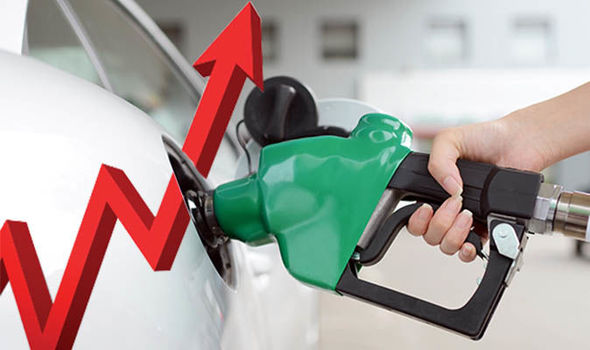December 30, 2024, the price of petrol in Pakistan is set at approximately PKR.PKR 252.10 per liter, with high-speed diesel (HSD) priced around Rs. 3.62 per liter.
Petrol prices in Pakistan have seen various fluctuations, especially amid global market changes and domestic policy adjustments.
The slight increase in these rates reflects both international market trends and Pakistan’s unique tax structure on petroleum products.
Global oil prices recently dipped, but due to heavy local taxes and levies, this decrease has only partially impacted the domestic market.
The government applies substantial taxes and petroleum levies, adding nearly PKR 90 per liter to the cost of both petrol and diesel.
These taxes make it challenging for the government to provide significant relief to consumers, even when global prices drop.
Recently, global oil prices decreased by $1.5 to $2.5 per barrel, which did help slightly, but the relief to Pakistani consumers remains modest due to these cumulative taxes and levies
For Pakistani households and industries, rising fuel costs significantly impact overall expenses, with knock-on effects across transport, goods, and services.
Transporters, in particular, bear the brunt of these costs, which are often passed on to consumers through higher prices for goods.
Businesses reliant on fuel for operations, such as logistics and manufacturing, also feel the strain, as fuel constitutes a core component of their expenses.
Petroleum Price in Pakistan
The rates have been adjusted by the government in response to international oil prices, currency exchange rates, and domestic policy considerations.
| Date | Petrol Price (PKR/Liter) | Diesel Price (PKR/Liter) | Price Change (PKR) |
| December 30, 2024, | 252.10 | 3.62 per litter | +0.78 |
| October 15, 2024, | 247.60 | 254.36 | -0.95 |
| October 1, 2024, | 248.55 | 255.31 | +2.00 |
| September 15, 2024, | 246.55 | 253.31 | -1.50 |
| September 1, 2024, | 248.05 | 254.81 | +3.00 |
| August 15, 2024, | 245.05 | 251.81 | -1.25 |
| August 1, 2024, | 246.30 | 253.06 | +2.50 |
| July 15, 2024, | 243.80 | 250.56 | +1.75 |
Key Factors Influencing Oil Prices in Pakistan
a. International Oil Market Trends
The international crude oil market is the primary driver of petrol prices in Pakistan. Changes in oil prices on the global market, whether due to production cuts by the Organization of Petroleum Exporting Countries (OPEC), geopolitical tensions, or shifts in global demand, have a significant impact on Pakistan’s fuel costs. Although recent global prices have softened, the high taxes and levies within Pakistan have limited the transmission of this decrease to consumers.
b. Currency Exchange Rates
The strength of the Pakistani rupee against the US dollar also affects petrol prices. Since Pakistan imports a large portion of its oil, any devaluation in the rupee means higher import costs, which are subsequently passed on to consumers.
In 2024, the rupee has seen volatility, which has contributed to the persistence of high petrol prices even when global oil prices have fluctuated downward.
c. Domestic Taxes and Levies
In Pakistan, a substantial component of fuel prices comes from taxes.
The government imposes a petroleum levy and additional taxes, which can account for as much as PKR 90 per liter.
These levies are critical for government revenue, making it difficult to reduce fuel costs without impacting fiscal stability. Due to this, even when global oil prices decrease, the relief experienced by consumers is often modest
d. Inland Freight Equalization Margin (IFEM)
The Inland Freight Equalization Margin (IFEM) covers the costs of transporting fuel across different regions in Pakistan.
This margin ensures a standardized retail price across the country but can add to the final retail cost.
For example, the IFEM for petrol is currently around PKR 7.79 per liter, reflecting the additional transportation costs required to distribute fuel nationwide
Future Projections and Government Initiatives
Looking ahead, petrol prices in Pakistan are likely to remain volatile, influenced by both international market dynamics and domestic fiscal policies.
The government has expressed interest in exploring alternative energy sources, including solar and electric vehicles (EVs), to reduce reliance on imported fuel.
Additionally, Pakistan’s participation in initiatives with neighboring countries for energy security could help stabilize petrol prices in the long term.
However, for the immediate future, petrol price fluctuations will largely depend on global oil market trends and the government’s fiscal approach to managing import costs and exchange rates.
FAQs on Petrol Prices in Pakistan
Q1: Why do petrol prices in Pakistan change frequently?
A: Petrol prices in Pakistan fluctuate due to factors such as changes in international oil prices, adjustments in domestic tax policies, variations in the Pakistani rupee’s value against the dollar, and transportation costs. The government reviews prices bi-monthly to reflect these factors and adjust prices accordingly
Q2: What role do taxes play in petrol prices in Pakistan?
A: Taxes have a significant impact on petrol prices in Pakistan. The government imposes a petroleum levy and other taxes that currently add around PKR 90 per liter to the cost of petrol and diesel. These taxes are critical for government revenue, which limits the extent to which price drops in the global market can benefit local consumers
Q3: How does the international oil market affect fuel prices in Pakistan?
A: International oil prices are a primary factor influencing local fuel costs. When global prices rise, Pakistan often sees an increase in domestic petrol rates. Conversely, when international prices drop, domestic prices may decrease, but only marginally due to high taxes and levies
Q4: What is the current petrol price in Pakistan?
A: As of December 24, 2024, the price of petrol in Pakistan is approximately PKR 252.10 per liter, with high-speed diesel at PKR 252.10 per liter. These rates may change based on the government’s bi-monthly price reviews
